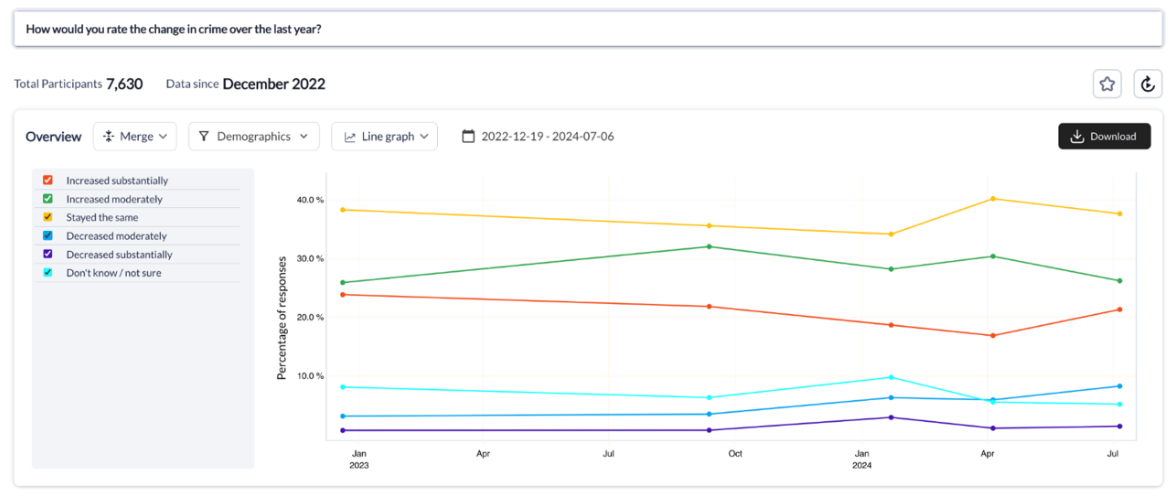AlphaROC equips policymakers and public sector leaders with real-time insights into public sentiment, enabling the proposal of tailored questions and the receipt of customized data. By transforming complex datasets into actionable intelligence through advanced cloud computing and machine learning, AlphaROC creates a continuous feedback loop for informed and dynamic decision-making.
Occam enables real-time monitoring and analysis of trends in employment, inflation, consumer spending, and other key economic indicators across demographics, supporting informed decision making to implement effective fiscal policies, allocate resources efficiently, and enhance economic stability and well-being.

Confidence in public health authorities is critical in helping them fulfill their mission. By harnessing occam’s feedback loop, public health authorities can analyze real-time feedback on public sentiment, telehealth usage, mental health perceptions, and drug usage trends across different demographics. This targeted approach ensures more effective public health campaigns, leading to better health outcomes and a more resilient public health system.

Occam’s sub-panelling capabilities allows users to connect with lawyers, nurses, educators, and other essential workers. Agencies from Homeland Security to the Department of Education can employ occam’s longitudinal data to gauge sentiment before proposing policy changes, and then monitor the impact of those changes to ensure that their initiatives are effectively meeting the needs of the communities they serve.

Through occam, governmental agencies can gain insights into media consumption and social media trends across different demographics. This data paints a picture of where people get their information and what they think about it. These insights can help the public service to develop targeted outreach programs and craft policies that address the needs and behaviors of diverse population segments, ultimately promoting a more connected society.

Occam monitors the overall health of the consumer as well as their propensity to make major economic decisions such as moving or finding a new job. By tracking consumer well-being through longitudinal metrics in necessities such as food and housing, as well as discretionary goods such as electronics and luxury items, occam nowcasts consumer confidence, providing real-time insights into economic trends.

Occam enables real-time monitoring and analysis of trends in employment, inflation, consumer spending, and other key economic indicators across demographics, supporting informed decision making to implement effective fiscal policies, allocate resources efficiently, and enhance economic stability and well-being.

Confidence in public health authorities is critical in helping them fulfill their mission. By harnessing occam’s feedback loop, public health authorities can analyze real-time feedback on public sentiment, telehealth usage, mental health perceptions, and drug usage trends across different demographics. This targeted approach ensures more effective public health campaigns, leading to better health outcomes and a more resilient public health system.

Occam’s sub-panelling capabilities allows users to connect with lawyers, nurses, educators, and other essential workers. Agencies from Homeland Security to the Department of Education can employ occam’s longitudinal data to gauge sentiment before proposing policy changes, and then monitor the impact of those changes to ensure that their initiatives are effectively meeting the needs of the communities they serve.

Through occam, governmental agencies can gain insights into media consumption and social media trends across different demographics. This data paints a picture of where people get their information and what they think about it. These insights can help the public service to develop targeted outreach programs and craft policies that address the needs and behaviors of diverse population segments, ultimately promoting a more connected society.

Occam monitors the overall health of the consumer as well as their propensity to make major economic decisions such as moving or finding a new job. By tracking consumer well-being through longitudinal metrics in necessities such as food and housing, as well as discretionary goods such as electronics and luxury items, occam nowcasts consumer confidence, providing real-time insights into economic trends.






Insights - What you need to know






